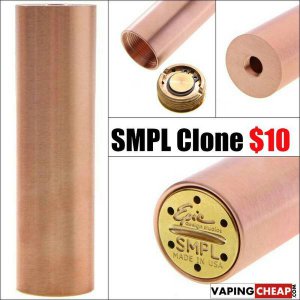After over 20 years on a Sherline lathe, I figure I can give an opinion.
- If you can afford it, get the long bed lathe. You may not need the capacity often but when you do, it helps. Even with the extra length, you can lift this entire lathe with one hand and put on the shelf.
- If I needed a small, precision lathe I would definitely buy it again. The motor is durable, strong enough for the lathe capacity, smooth, variable speed and gets up near 2800 true rpm. I am still on the same motor and it runs the same as when it was new.
- I bought the package, then added accessories over time. Back then, the package included the basics but I made an even more complete package and it was a mostly good decision. I highly recommend you buy Joe Martin's book, Tabletop Machining, and read it to see what these accessories do and to give you a better idea of what you need to get up and running. While it is a showcase for Sherline's stuff, it is well done and will teach you how their equipment is used.
- The only design flaw on this lathe, at least in my experience, is the totally non-adjustable tailstock. To deal with this, Sherline sells an adjustable live center. This thing is a joke. You can spend an hour aligning things and get it to work but every time you put it back into the tailstock ram you will have to realign it. Better to make a good live center, index it to find the most accurate position and create witness marks so you can install it the same way every time. On the lathe itself, the tailstock is the one single thing I dislike.
- To cut threads, you will need the screw cutting accessory package they sell - BUY IT! You will have to screw cut manually but it is capable of cutting Class 3 fits and I would not be without it.
- Make, do not buy, a rear mounted parting tool post. The Sherline does not like to part from the front but it will part from the rear at very high speeds without a hitch. A P1-N blade is all you need to part anything on this lathe.
You will repeatedly hear guys tell you that you cannot make big parts on a small lathe but you can make small parts on a big lathe. In my opinion, this is naive. I have an 11" lathe as well but if I need to make a small, precision part it is far easier and faster to make it on my Sherline. It is, however, true that there is an upper limit to what a Sherline lathe can do but anything that fits on the lathe can be completed. I have worked on pieces up to 2" OD and 1-1/4" over the cross slide, without using the riser blocks. To put this in perspective, I only stepped up to a larger lathe about 4 years ago and in all that time I rarely felt limited by the Sherline lathe. Even with the larger lathe - an Austrian made Emco Super 11 CD, which ain't no slouch - I still pull the Sherline out if the part is small - it is that good, that precise.
This lathe can hold very tight tolerances; factory says about 0.003" but I know it can work into the low tenths with care. Don't think you're going to be taking big cuts but with the right tool you can easily take 0.050" deep cuts in mild steel. One nice thing is that the headstock swivels. Some might think this is a disadvantage but the Sherline headstock can be aligned precisely to the ways to produce extremely accurate cuts. Here, I'm talking about a taper-free skim cut down a 4" rod held just in the chuck. Oh, you can only get a 3/8" rod through the spindle so keep that in mind.
You will need to learn to grind HSS tools. Like all lathes, carbide tools work but not nearly as well as HSS. The lathe is too light and slow for carbide but with a properly ground HSS tool it can surpass some larger machines.
Sherline's customer service is said to be quite good. I don't know much about it - nothing I bought ever broke. Not all of their accessories are the best - that adjustable live center and their parting tool holders to name a few - but their stuff is well-made. I especially like their chucks. Don't forget that Sherline's philosophy is that anything they sell in the future will work on all their machines, which allows you to upgrade your lathe if necessary.
I also like the ER-32 chuck from Beall Tools. With good collets it will work really well on the Sherline lathe and allow you to work up close to the chuck on pieces up to 3/4" OD - very nice tool to own.
Sorry for running on and on about this lathe - those of us who know this machine also know what it can do - we get long-winded!


